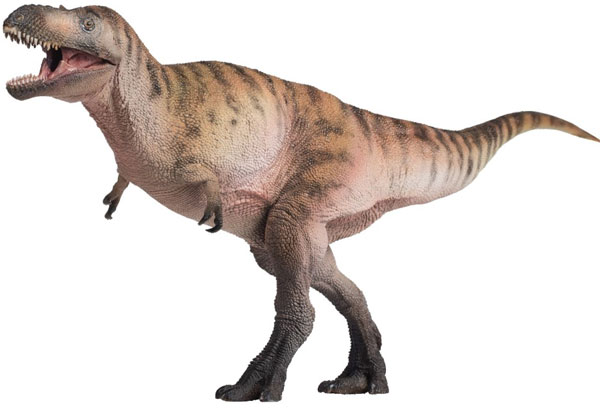Nanotyrannus lancensis Fossils and the Link to Edmontosaurus annectens
Nanotyrannus lancensis Fossils and the Link to Edmontosaurus annectens
Recently, Everything Dinosaur posted up an article featuring the research work undertaken on an extensive Edmontosaurus (E. annectens) bonebed located at Hanson Ranch in eastern Wyoming. The dinosaur fossils associated with the five quarries and three exploratory quarries are almost entirely representative of Edmontosaurus annectens. Approximately, 94 percent of all the dinosaur bones found at this site represent this Edmontosaurus species.
To read our article about the Hanson Ranch bonebed: 13,000 Edmontosaurus Bones and Counting.
While the quarry is clearly dominated by the remains of Hadrosauridae, the researchers report finding a few skeletal elements assigned to bird-hipped dinosaurs such as ceratopsids, pachycephalosaurs, armoured dinosaurs (nodosaurids) and small ornithopods associated with the Thescelosauridae family. Such a large number of Edmontosaurus carcasses did not go unnoticed by carnivorous theropods. Shed teeth from meat-eating dinosaurs are common in the bonebed, evidence of these animals scavenging the decaying Edmontosaurus remains. The most common teeth associated with Hanson Ranch have been ascribed to the Dromaeosauridae and Troodontidae with the larger teeth identified as Tyrannosauridae.
The Fossil Bones of Nanotyrannus lancensis
Nanotyrannus (N. lancensis), is a controversial genus of tyrannosaurid dinosaur known from several fossil specimens including a remarkable fossil found in association with a ceratopsid nick-named “Bloody Mary”. The validity of this taxon is debated. Many palaeontologists claim that fossils ascribed to Nanotyrannus (dwarf tyrant), represent the remains of juvenile, sub-adult Tyrannosaurus rex.
In the scientific paper, detailing the Edmontosaurus bonebed, reference is made to a Nanotyrannus fossil discovery. In 2001, the remains of the foot of a Nanotyrannus lancensis were found on the surface at a nearby site designated Stair Quarry (not included in the Edmontosaurus study). The paper cites that over the next fifteen years or so, fifty additional bones from this specimen including a right maxilla with teeth in situ and a left dentary, also with some teeth present were discovered.
A PNSO Model of the Controversial Genus Nanotyrannus
The picture (above) shows the PNSO Nanotyrannus dinosaur model.
To view the PNSO range of prehistoric animal figures: PNSO Dinosaur and Prehistoric Animal Models.
Not Scientifically Described
In the scientific paper, the researchers comment that although these fossil remains have yet to be formally scientifically described, they have enabled the research team to clearly distinguish the slender, blade-like shed teeth of Nanotyrannus from the more robust, D-shaped crushing teeth of Tyrannosaurus, both of which are commonly found in the bonebed. It is intriguing to speculate that if this material ascribed to Nanotyrannus is studied extensively, then it might prove helpful in resolving the debate over the validity of the Nanotyrannus genus.
Visit the Everything Dinosaur website: Everything Dinosaur.


